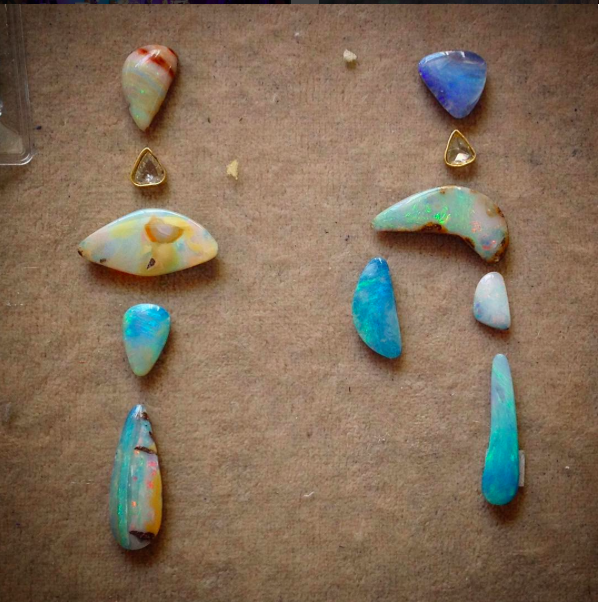The symbolism, superstitions and legends of October’s Birthstone
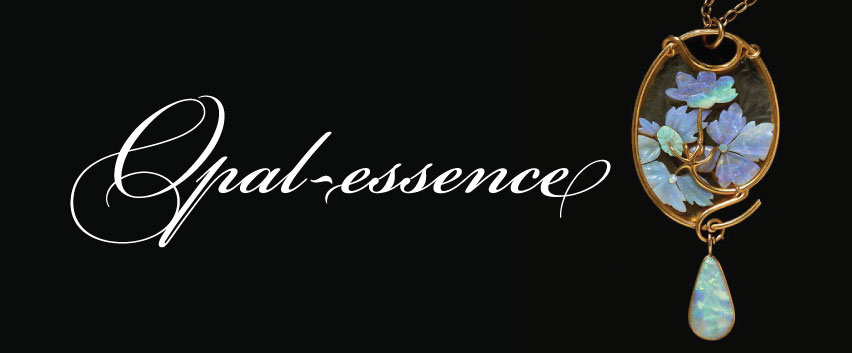
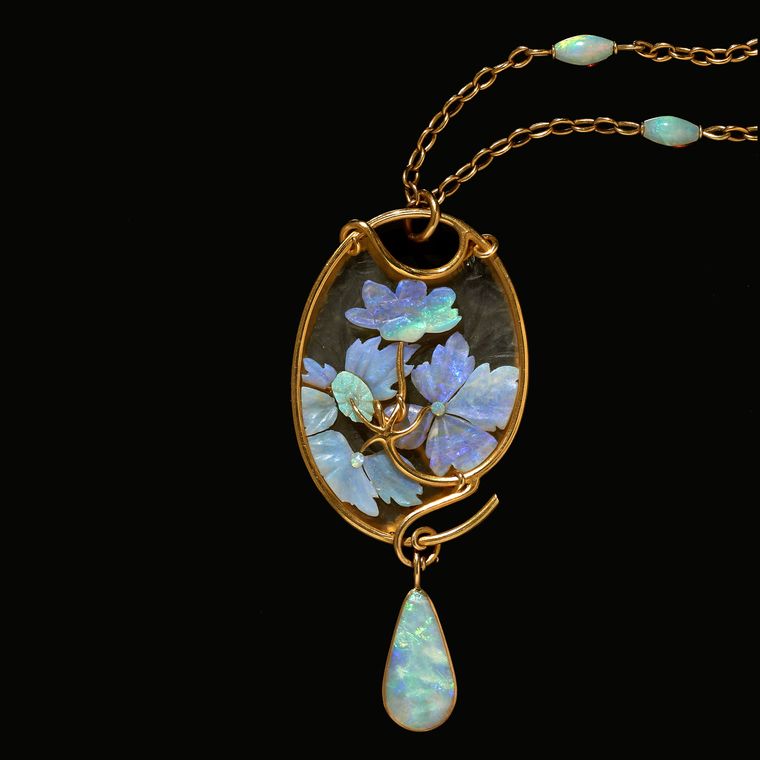
Wartski’s opal floral Lalique pendant
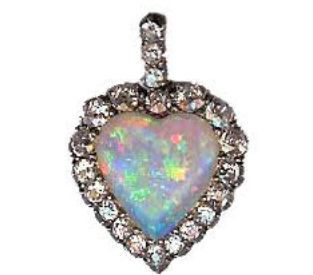
Stephen Russell’s crica 1850’s opal and mine cut diamond heart locket
“There is in them a softer fire than the ruby, there is the brilliant purple of the amethyst, and the sea green of the emerald – all shining together in incredible union. Some by their splendor rival the colors of the painters, others the flame of burning sulphur or of fire quickened by oil.” This how Roman scholar Pliny the Elder described the rare beauty of opals.
October’s birthstone, opal, with its fiery luminescence and vivid hues that change with the light, has acted as a metaphor for Shakespeare and Ralph Waldo Emerson. Opals have also been written about by other great authors and playwrights such as Mark Twain, John Steinbeck and Oscar Wilde.
Throughout history, they have been gemstones with a rich cultural past of lore and legend, filled with magic, mystery and superstition. Over the past five to 10 years, they have also become one of the most widely regarded gems among antique and modern-jewelry collectors alike.
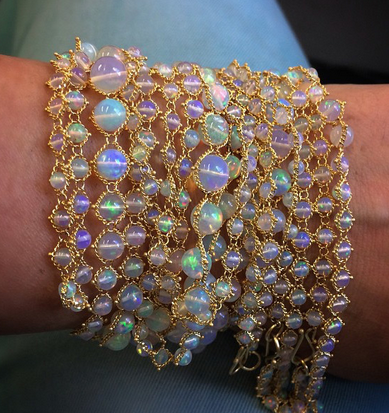
Amali’s woven gold opal necklace wrapped around the wrist
Independent designers such as Margery Hirschey prefer the organically shaped Boulder opals. “I have deep affinity for stones that display variations in hue within the gem—but I do prefer those that reveal small flashes of fire rather than being too other-worldly.” Hirschey works with varied shapes in earrings, creating a painterly mosaic effect by first laying out the start of the design with the opals and seeing which shape and color and other small accent gems will look best together. Her first collection was comprised of only opals and when asked how she felt about the superstitions associated with them, she said—“there are those type of stories about all different gems; are you going to believe everyone?”
- Margery Hirschey working with differnet layouts of opals for earrings
- Margery Hirscheys final layout and how the earrings came together
No. But I am definitely superstitious about these. I am one of those people who can gaze at the different types of opals in both antique and modern designs and be mesmerized by the way the interplay of light, fireworks of color and how stones are formed in nature can create small masterpieces that look either like painting or glow like each stone has its own story to tell. Yet I am hesitant about wearing one.
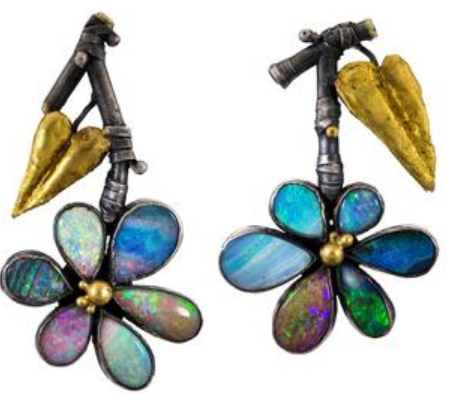
Judy Geib Opal floral earrings
My grandmother was a big fan of opals and while in my teens, she took me into a vintage jewelry shop where I was asked by the thick-accented Russian owner, “When is your birthday?” while I was trying a ring on my finger. When I told her, she shook her head and said, No! You cannot wear opals if they are not your birthstone. If you do, they will bring you very bad luck.”
My grandmother whispered, “we don’t believe in old wives’ tales.”
“We don’t?” I thought and quickly took the ring off my finger.
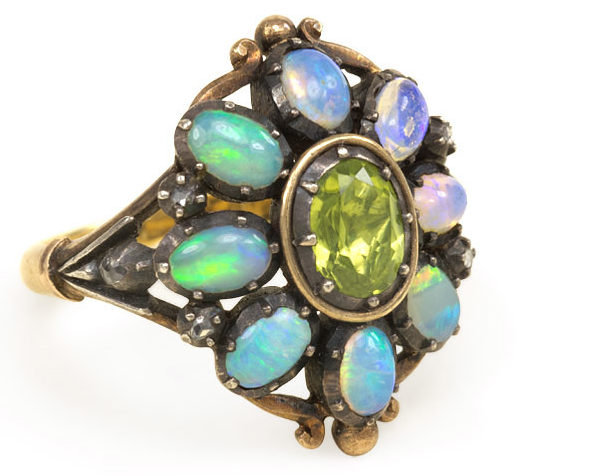
Kentshire Galleries’ circa 1940s ring
Although Queen Victoria could dispel an entire nation’s fear of wearing opals, neither the stories of how she rejected the superstitions nor my grandmother’s rational words could dismiss mine.
The most widely known story of opals bringing ill fortune to the wearer was derived from Sir Walter Scott’s Anne of Geierstein, published in 1929. In the novel, the character of princess Hermione wears a beautiful opal in her hair, which sparkles with iridescence when she is good humor, but flares red when she is not. For this reason the gem is sprinkled with Holy Water, causing it to lose its luster. The next day there is nothing left of Hermione but a small heap of gray ashes found on her bed. This caused the opal market to crash. But after a huge discovery of opal mines was made in Australia, a British Territory, in 1870, Queen Victoria wore opal jewelry to negate the superstition. She also presented her friends and five daughters with gifts of fine opals. It was Tullie Cornthwaite Wollaston, born in South Australia in 1863, who introduced Australian opals to the rest of the world.
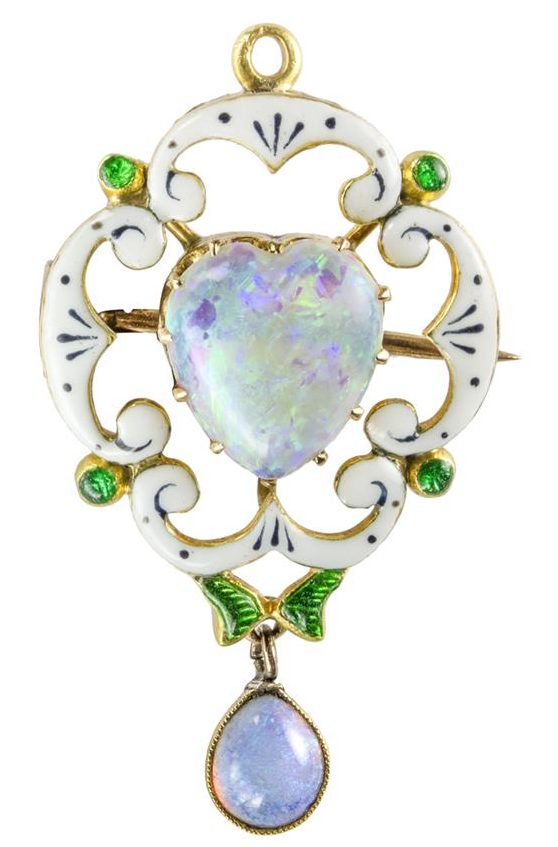
Bentley and Skinners antique white enamel and heart-shaped opal pendant with opal drop
Prior to that, there was a story of a cursed opal that King Alfonso XII of Spain received a ring from a vengeful Comtesse he had previously courted. After giving the opal ring to his wife, she died unexpectedly. The ring was passed down through generations and each new owner also died mysteriously. The depressed king decided to wear it himself, and he also died shortly afterward. But at the same time, cholera had reached epidemic proportions, killing more than 100,000 people from all class levels, which was most likely the real reason for these untimely deaths.
But in earlier times opals were prized throughout various cultures and thought to bring good fortune, good health and foresight. The Romans ranked opals as second only to emeralds and believed these gems symbolized hope and purity. The Ancient Greeks believed that opals brought prophecy. The word opal derived its name from “opalus”, which means “to see a change in color”.
After Queen Victoria rejected the rumors, opals were designed into all categories of jewelry throughout the 19th century. Opals were then used in Edwardian through the rebellious Art Nouveau period, when jewelers mixed various types of opals into one piece, worked them in unconventional metals and with the added artistry of enameling.
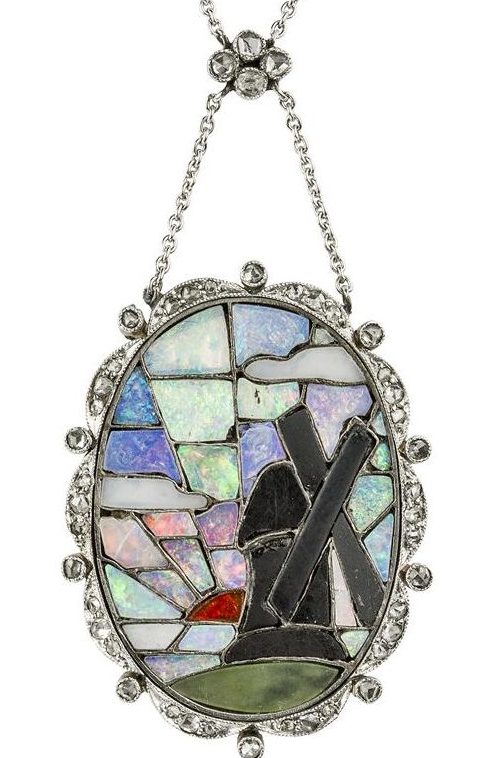
Bentley & Skinner’s Art Deco opal, onyx and diamond pendant
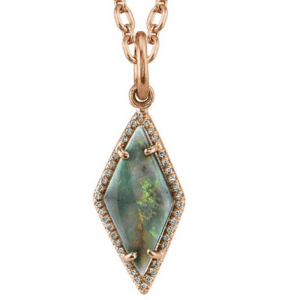
Irene Neuwirth’s opal and diamond pendant
Like the designers of the Art Nouveau period, contemporary independent designers are all for experimenting and have varied aesthetics when working with the many different types of opals available today. There are the more common flecked blue/green variations, and Mexican fire opals that go from deep yellow to orange to pale red. The vivid rainbow-effect of Australian Boulder opals have become one of the most widely sought after, while the most luxurious are the fine, mysterious black opals with pops of blue, pink and violet.
Whatever type of opal you prefer and whether it is your birthstone or not, you can wear it without superstition and recognize the symbolism in which the piece was gifted to you or the meaning you personally attach to it.
I admit I am still working on this—but at the writing of this story, I am coveting quite a few pieces. As my grandmother said, “We don’t believe in old wives’ tales.” With the ring I am trying out on my finger as I type, I am almost ready to say, “no we don’t.”
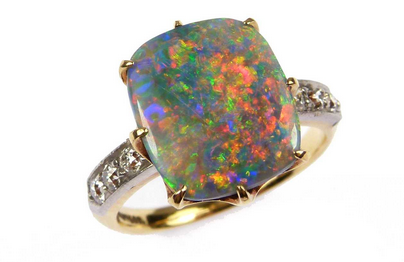
S.J. Phillips’ circa 1910 Tiffany & Co opal ring

